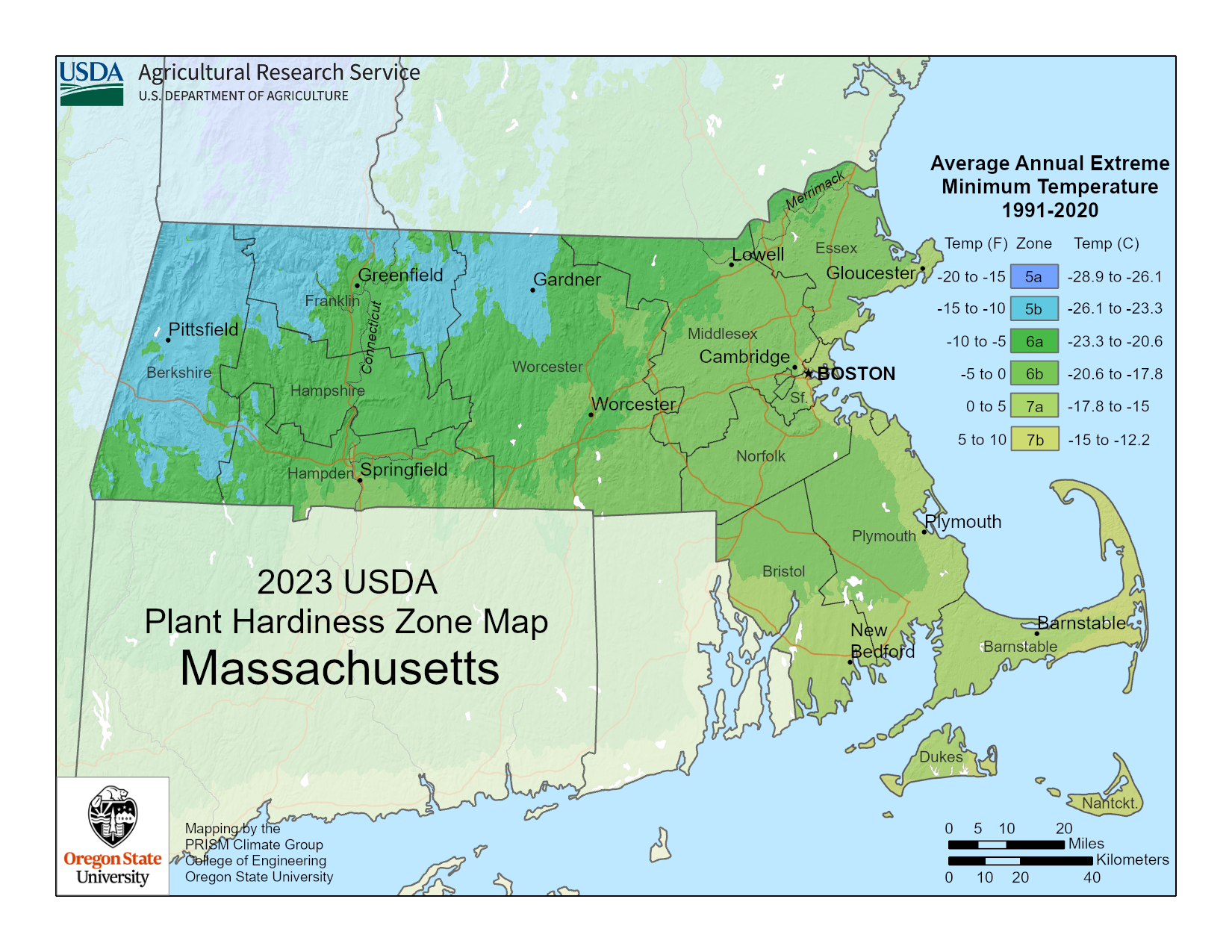Massachusetts Planting Zones - USDA Map Of Massachusetts Growing Zones

Click on the image above to see a larger version.
Massachusetts USDA Plant Hardiness Map
The USDA released a plant hardiness map for 2023 that reflects average winter low temperatures over the last 30 years.
The map has changed somewhat from previous versions to take into account the general winter warming trend across the country.
The Massachusetts planting map includes zones 5a, 6a, 6b, 7a and 7b. To see a closer image of the zones, you can click on the map above. Once you find your location on the map, you can use this information to find the best plants suited for your Massachusetts zone.
It is important to note that the USDA plant hardiness map is useful as a foundational tool when choosing plants. Other factors do affect the vitality of plants in a certain area. These factors include, wind, soil, humidity, winter sunlight, pollution and how you plant and care for plants.
The USDA plant hardiness map is used by most nurseries and is noted on the plant label. If you do not see the hardiness zones indicated, be sure to ask someone at the nursery who can provide that information for you.
Most local nurseries will sell only plants that will survive in the area in which they are located.
Sign up for the Gardening Know How newsletter today and receive a free copy of our e-book "How to Grow Delicious Tomatoes".
Plant Outside Your Zone with Season Extenders
- Row covers like these Agfabric floating plant covers from Amazon are an affordable way to trap heat and protect your plants against frost and wind, making them perfect for growing in cooler zones.
- The Ohuhu Portable Mini Greenhouse from Amazon is great for starting seedlings indoors or protecting plants outdoors in cold zones, especially for smaller spaces.
- Cold frames, like the Outsunny Raised Garden Bed Cold Frame from Amazon, are a stylish way to protect your raised beds from frost and rain while trapping in heat.